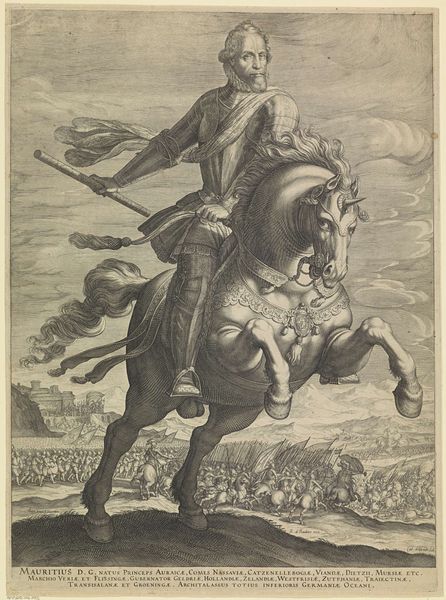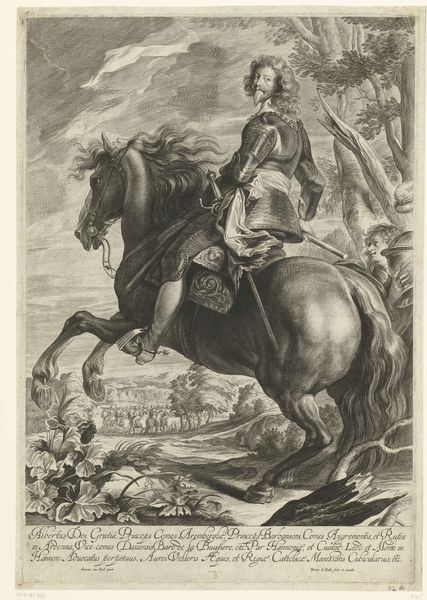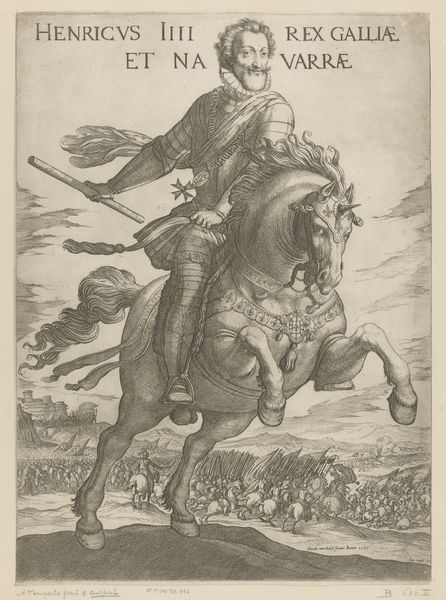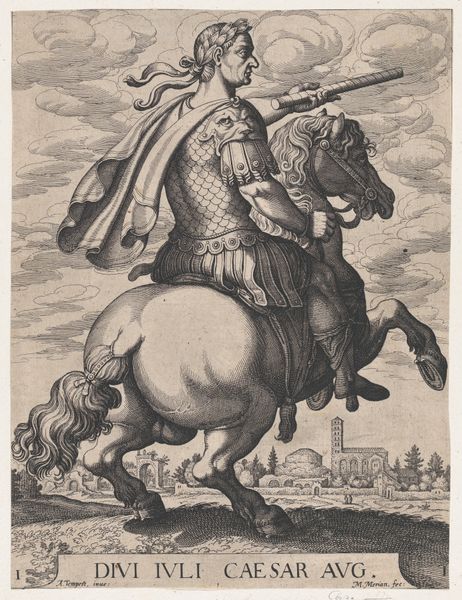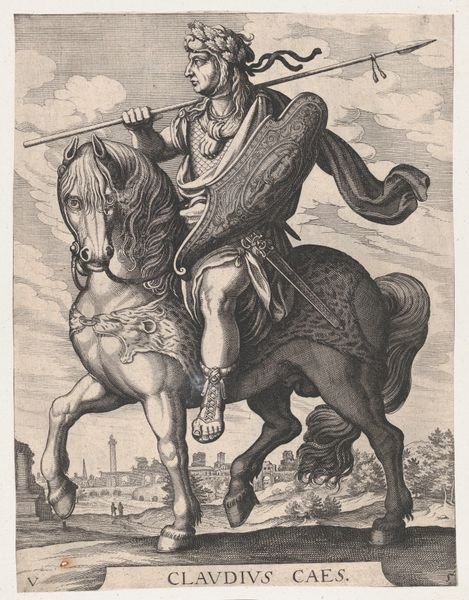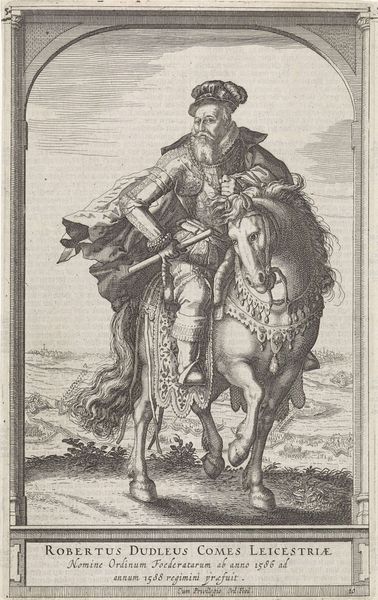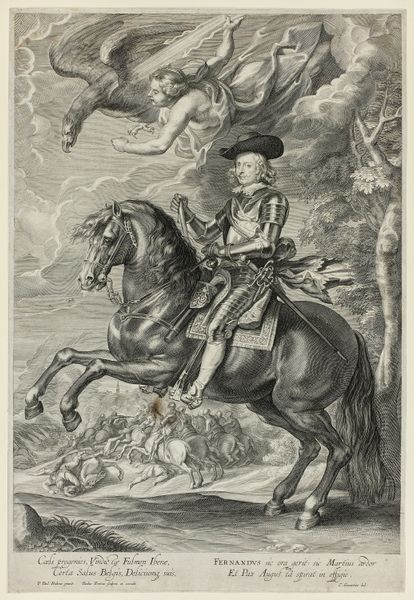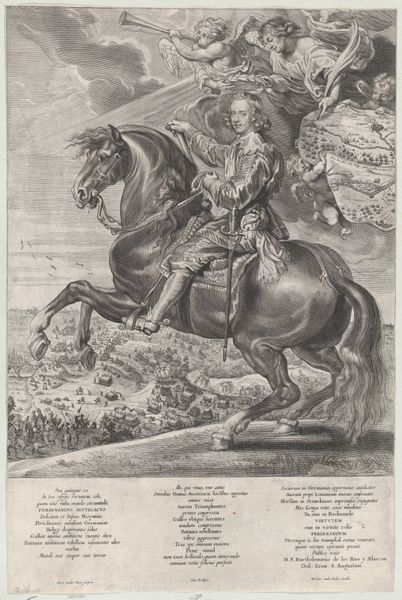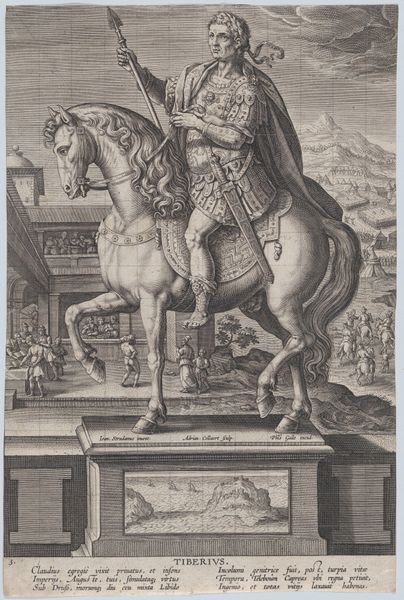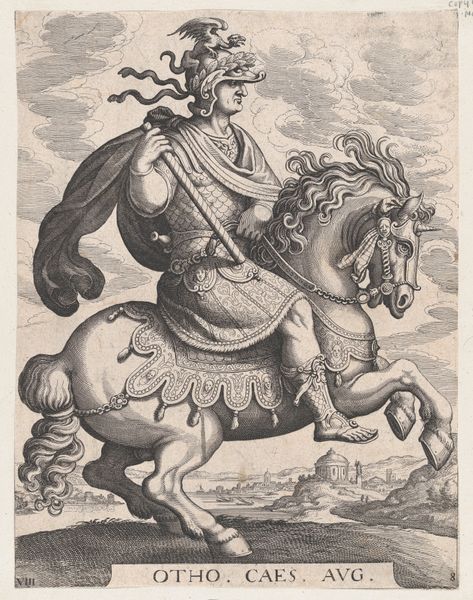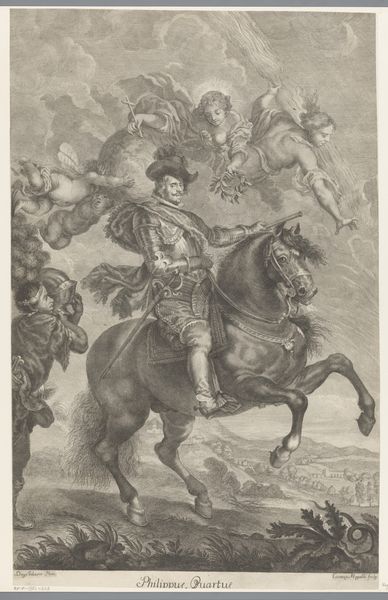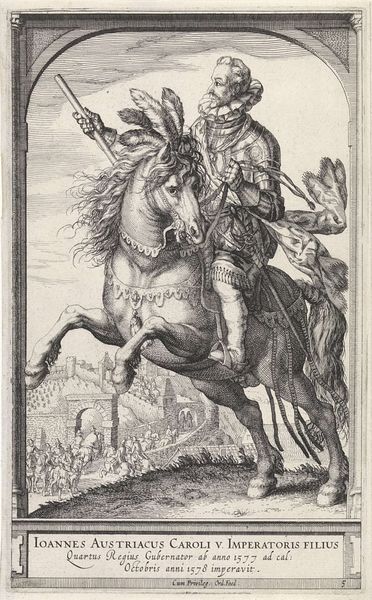
Portrait of Emperor Rudolph II on Horseback 1586 - 1629
0:00
0:00
drawing, print, engraving
#
portrait
#
drawing
# print
#
mannerism
#
horse
#
men
#
cityscape
#
portrait drawing
#
history-painting
#
engraving
Dimensions: Sheet: 19 15/16 × 15 1/2 in. (50.7 × 39.3 cm) Plate: 19 3/8 × 15 in. (49.2 × 38.1 cm)
Copyright: Public Domain
Editor: Here we have Aegidius Sadeler II's "Portrait of Emperor Rudolph II on Horseback," created sometime between 1586 and 1629. It’s a print, so ink on paper, but it has a certain...grandeur, wouldn't you say? How do you interpret this work, especially considering the medium used to create it? Curator: The print medium is key. Engravings like this were inherently reproductive technologies. The image is of Rudolph II, but its function extends beyond simple representation. Think about the process: the labor involved in meticulously creating this plate, the relative ease with which it could be reproduced and disseminated. Consider how that accessibility affects the image's impact. Editor: So, the *making* of the print is as important as *who* it depicts? Curator: Precisely. This wasn't a unique, singular painting for a private collection. This print could reach a far wider audience. It's not just about Rudolph’s power; it’s about how that power is constructed and circulated through the material process of printmaking. How does the detailed depiction of armor and weaponry relate to this mass production? What’s being commodified here, exactly? Editor: So the image of Rudolph, and therefore, his authority, is, in a way, being manufactured and distributed like any other product. Does the presence of the city in the background emphasize how Rudolph oversees this ‘production’? Curator: Good point! And notice how the very lines composing the cityscape – its buildings, roads – mirror the regimented strokes of the engraving itself. Consider also who this print was *for*. Who was the intended consumer, and what sort of labor force and material means would have sustained their purchasing power? Editor: I never considered how the process of printmaking itself played such a large role in shaping the message. Curator: Seeing the connections between the making and the meaning, the material and the message, that's where art history truly comes alive.
Comments
No comments
Be the first to comment and join the conversation on the ultimate creative platform.
